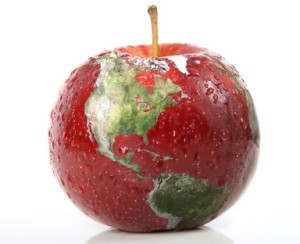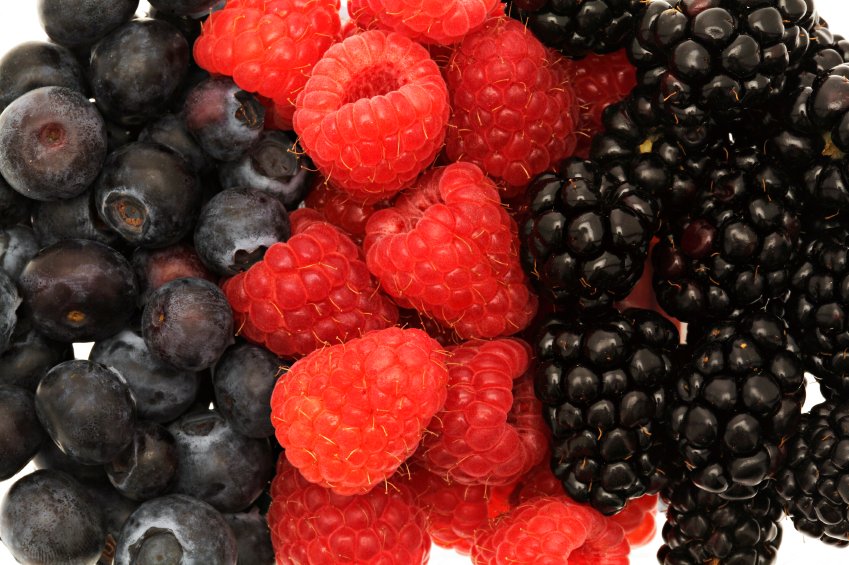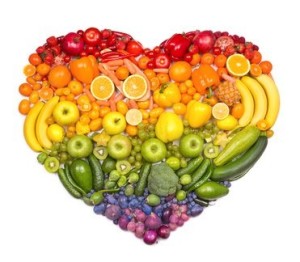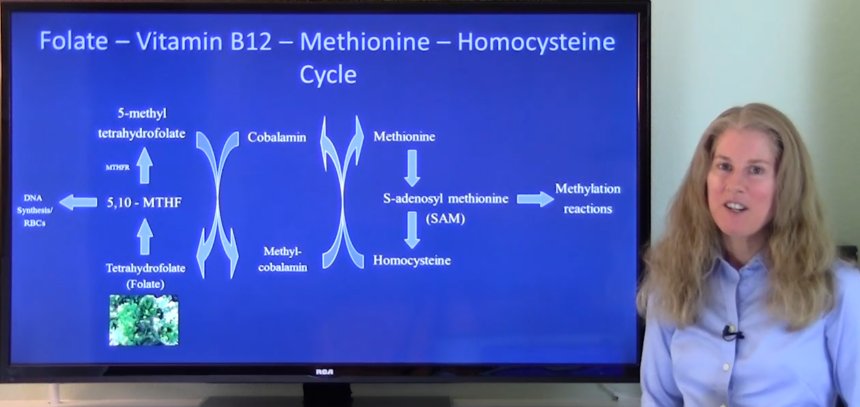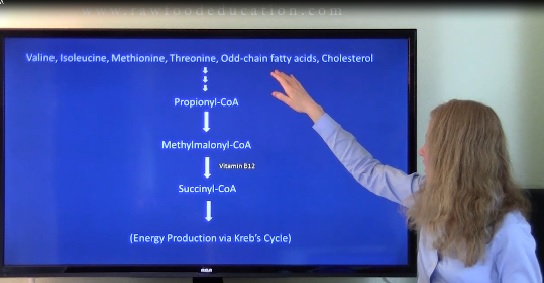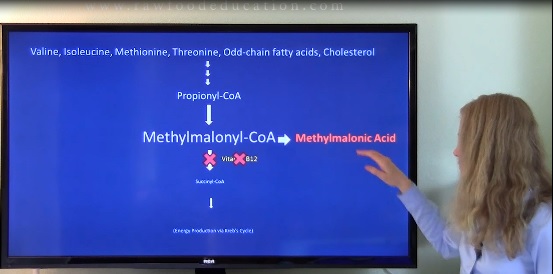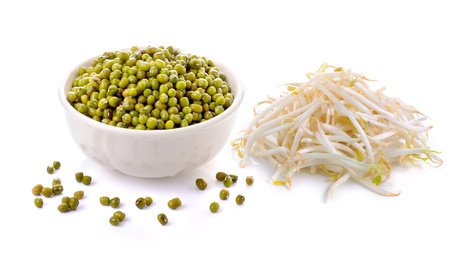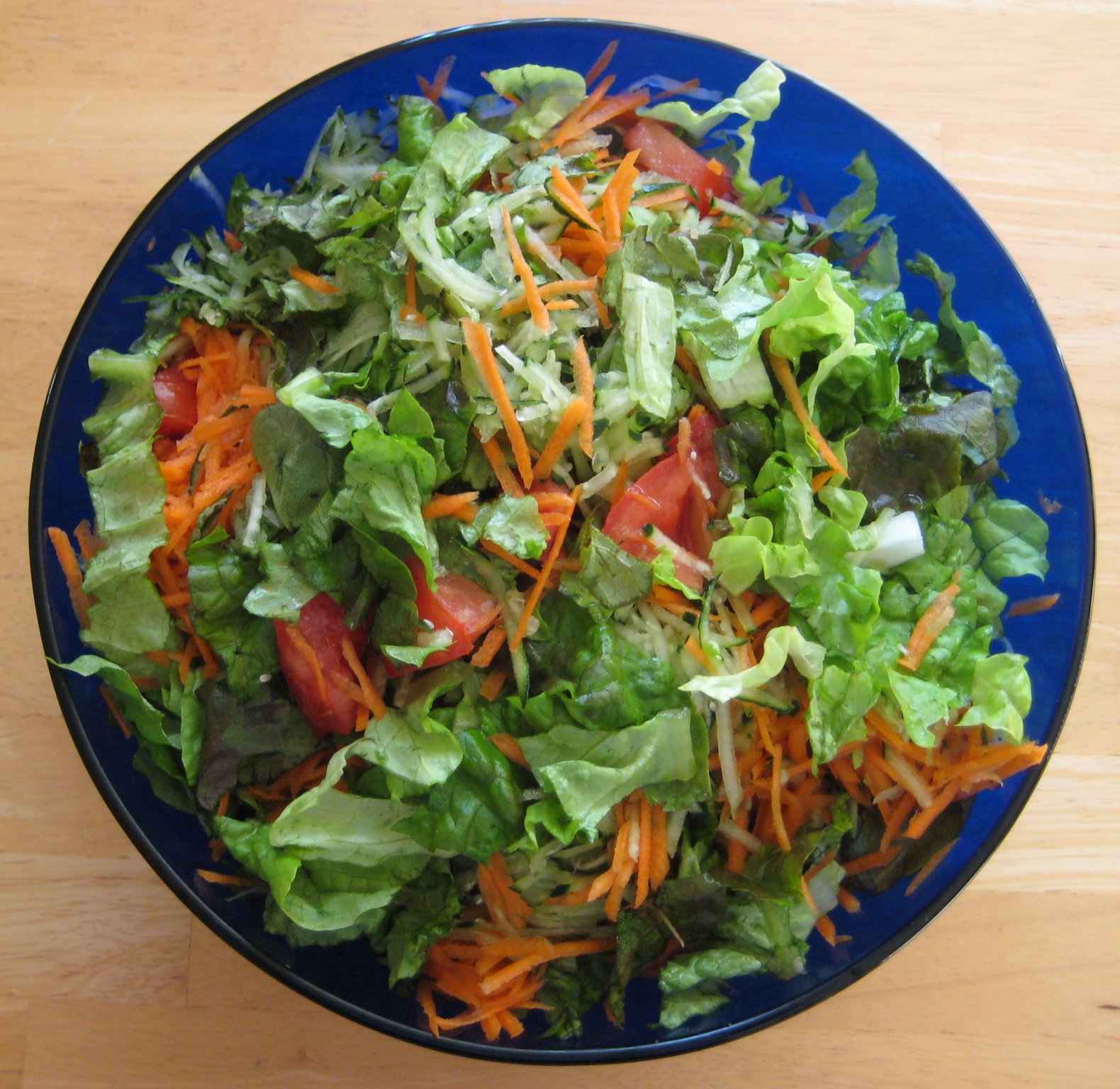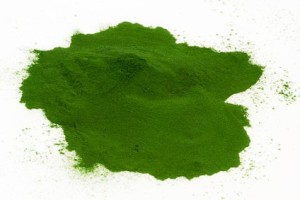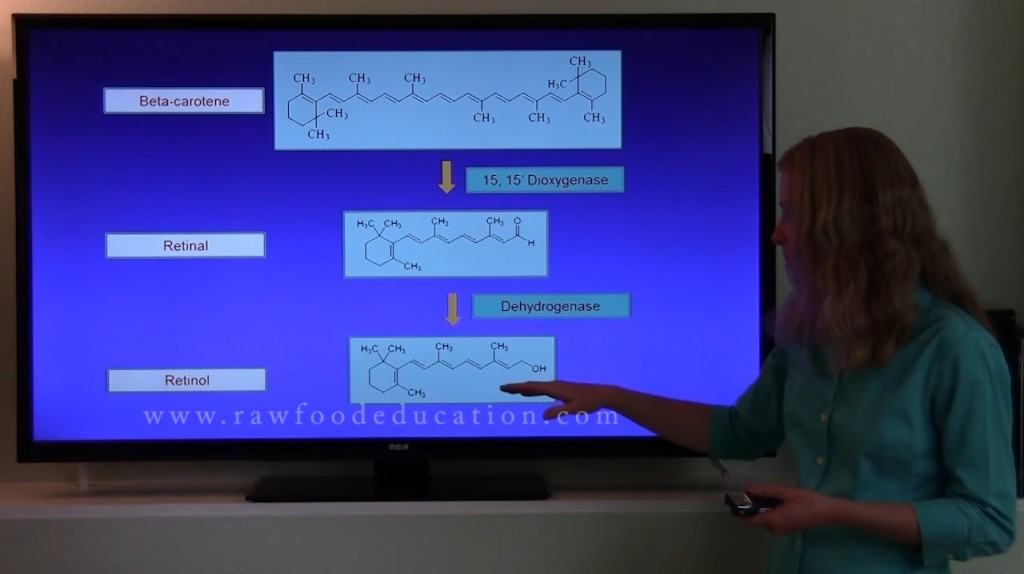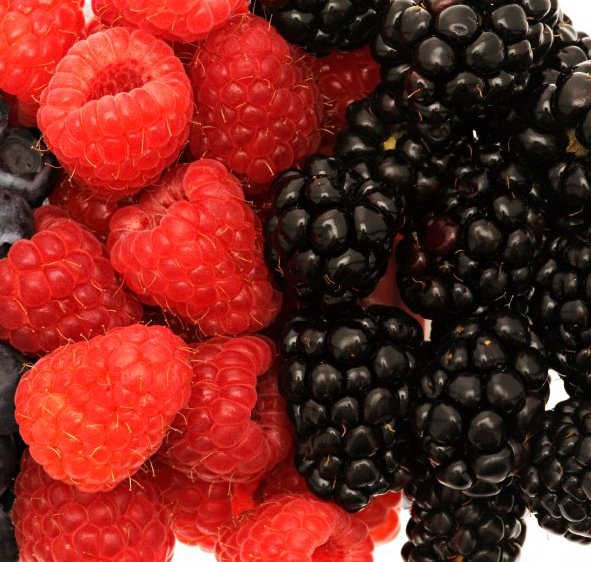Every 5 years the USDA and US Department of Health and Human Services publish updated dietary guidelines for the American public based on recommendations from the Dietary Guidelines Advisory Committee.
The Dietary Guidelines Advisory Committee (DGAC) is responsible for providing the US Federal government with current research-based evidence on diet, health, and nutrition, in a document titled the Scientific Report of the 2015 Dietary Guidelines Advisory Committee. From this report, the Federal government develops the Dietary Guidelines for Americans 2015, which will be released later this year.
For the first time in history, the DGAC has suggested that ‘health, dietary guidance, and the environment’ be considered in dietary choices and encourages people to focus their diet on whole natural plant foods including vegetables, fruit, nuts, seeds, legumes, etc. The committee especially emphasized the importance of the inclusion of vegetables and fruit in a healthy diet, which make up one-half of the current USDA MyPlate graphic.
The DGAC considers healthy plant-based diets to be more nutritious and of lower ‘environmental impact in terms of greenhouse gas emissions, land use, water use, and energy use’ than the average US diet. The committee acknowledges an overlap between health-promoting plant-based diets and reduced environmental impact. This connection has been a topic of discussion for many years in health circles, and now more than ever has become an especially timely topic given the current drought situation in many of the US western states, including California, where much of the food in the United States is grown.
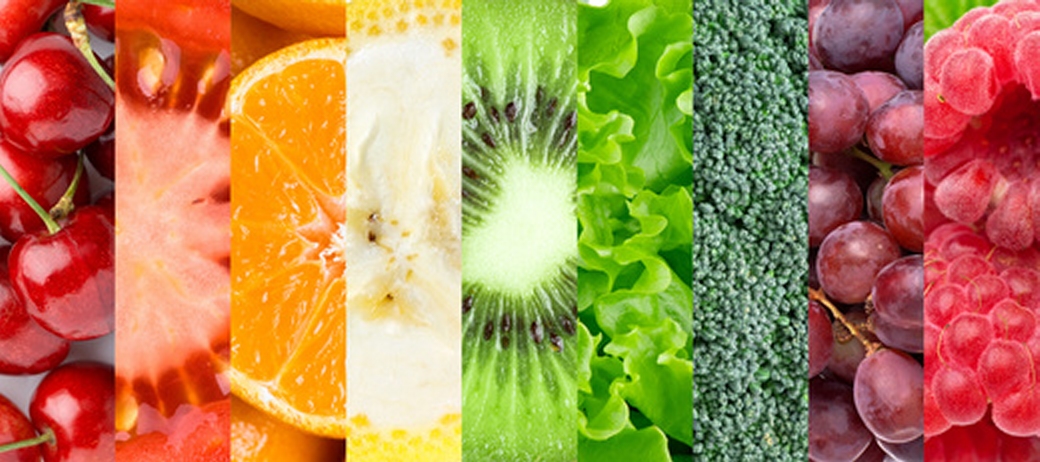
The committee recognizes that access to food is a major consideration and that ‘a sustainable diet ensures this access for both the current population and future generations.’ It is good to see that research-based strategies for producing enough food to feed our growing population healthfully and sustainably are beginning to get the attention of US policy makers. Intake of animal-based foods in the US is currently higher than the suggested plant-focused dietary patterns suggested by the committee. The committee is not necessarily asking people to completely give up any particular type of food, but rather to have a dietary emphasis on whole plant foods for both health and sustainability reasons.
It will be interesting to see the extent to which these plant-focused recommendations by the DGAC are reflected in the final Dietary Guidelines for Americans 2015. Regardless of the special interests that may have influence over the final document, I am happy to see that the DGAC makes their recommendations based on sound research and recognizes that the most health promoting diet is also the most environmentally sustainable. I am also pleased to see that the suggestions advocated by the committee are more aligned than ever with the information we teach in our online Mastering Raw Food Nutrition and Educator Course. For more class details, click here.
References and Research
Scientific Report of the 2015 Dietary Guidelines Advisory Committee:
http://www.health.gov/dietaryguidelines/2015-scientific-report/02-executive-summary.asp
http://www.health.gov/dietaryguidelines/2015-scientific-report/
One of the best ways to keep in touch with us is to join our email list. You’ll receive a free copy of Our Top 12 Strategies for Long Term Success on A Raw Plant-Based Diet eBook along with regular information about raw food and plant-based diets and periodic promotions for our classes, events, and other offerings!
5 Great Reasons to Add More Fruits and Vegetables to Your Diet
Raw fruits and vegetables are well-known for their health promoting benefits, so much that the current USDA MyPlate suggests that half of our diet be composed of fruits and vegetables. Here are many of the reasons why:
Vitamins
Fruits and vegetables contain many important and synergistic vitamins. Good examples include vitamins C and E. Many fruits and vegetables are excellent sources of vitamin C, including red bell peppers, strawberries, broccoli, cauliflower, papaya, lemons, tomatoes, cantaloupe, and of course, oranges. Leafy greens are rich in both vitamin C and vitamin E, and great sources include romaine lettuce, kale, mustard greens, dandelion greens, and collard greens.
Minerals
Bananas are famous for their potassium content, but fruits in general are great potassium sources. Dates, durian, apricots, honeydew melon, tangerines, oranges, peaches, nectarines, and mangoes are especially high in potassium.
Where do you get your calcium? Where do you get your iron? Many leafy greens can be rich sources of these important minerals, including kale, bok choy, dandelion greens, and even lettuce when eaten in quantity. Three cups of kale or dandelion greens provide over one quarter of the daily value for calcium and notable amounts of iron. A little-known fact is that some fruits can be notable sources of these two minerals as well. For example, only two valencia oranges or 5 figs provide 10% of the daily value for calcium. When eaten in greater quantities than this, as many raw food enthusiasts do, the calcium content can really add up. In regard to iron, although not as rich as leafy greens, mulberries, blackberries, and raspberries when eaten in quantity can provide notable amounts of this important mineral.
Phytonutrients
Plant foods in their fresh, raw state contain numerous phytonutrients, many of which can act as antioxidants which help protect our cells from age accelerating free radicals. Anthocyanins are antioxidants found in blue or purple foods such as blueberries and blackberries. Isothiocyanates are antioxidants found in cabbage family plants, also known as cruciferous vegetables, including collard greens, kale, bok choy, broccoli and Napa cabbage. Lutein and zeaxanthin are yellow-colored antioxidants, and are believed to play a role in protecting the macula of our eyes from damage caused by sunlight-induced free radicals. Lutein and zeaxanthin are found in foods such as dark leafy greens and yellow-orange fruits and vegetables, such as summer squash. Additional rich food sources include kale, Swiss chard, collard greens, romaine lettuce, broccoli, red bell peppers, dandelion greens, and zucchini.
Water
Water is involved in many essential body processes and makes up a significant percentage of body weight. In some raw food menus where fruits and vegetables make up the majority of foods eaten, the water content can be close to a gallon (almost 4 liters) or more! By comparison, raw menus that focus on denser more dehydrated foods, nuts, seeds, or oils can be less than half of this amount. Standard western menus are generally lower still at about one third the quantity of a high fruit and vegetable menu, creating the need for additional water consumption to meet daily needs. Unlike plastic water bottles, fruits and vegetables provide an abundance of healthy water in biodegradable containers!
Fiber
Dietary fiber is the indigestible portion of plant matter that is often referred to as roughage. Fiber plays critically important roles in various aspects of intestinal health, blood sugar and cholesterol regulation, and other important health benefits. Fiber keeps food moving though the intestines. It can help carbohydrates be digested more slowly, which in turn helps to stabilize blood sugar levels. It can bind to excess cholesterol in the digestive tract, helping keep blood cholesterol levels at an appropriate level. Fiber also plays a very important role in maintaining the health of the all-important human microbiome, as it provides food for healthy probiotic bacteria.
And the list goes on…
This is just the beginning! There are so many other reasons to include more fruits and vegetables in one’s diet and we are happy to see that the USDA now emphasizes the importance of these foods to the American public more than ever before.
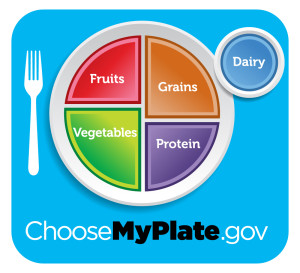
Posted in accordance with USDA MyPlate icon usage guidelines: The USDA does not endorse any products, services, or organizations.
One of the best ways to keep in touch with us is to join our email list. You’ll receive a free copy of Our Top 12 Strategies for Long Term Success on A Raw Plant-Based Diet eBook along with regular information about raw food and plant-based diets and periodic promotions for our classes, events, and other offerings!
How can folate mask a vitamin B12 deficiency?
This pathway is a little biochemically-intense, so I encourage you to watch the video first and then read the text below for clarification.
Vitamin B12 converts homocysteine to methionine by transferring methyl groups from 5-methyl tetrahydrofolate to homocysteine.
In a vitamin B12 deficiency, we often see elevated homocysteine levels, because vitamin B12 is not available to transform homocysteine into methionine. So, homocysteine levels increase.
In a vitamin B12 deficiency we can also see large red blood cells, referred to as macrocytic anemia, because vitamin B12 is not available to convert 5-methyl tetrahydrofolate back into folate. This is called the "methyl folate trap", where folate is "trapped" in the form of 5-methyl tetrahydrofolate. Folate is used to create red blood cells and DNA, and when there isn't enough folate available, red blood cells do not fully mature and stay large. On a lower folate diet, such as with many versions of the standard western diet, we tend to see this situation.
However, when someone with a vitamin B12 deficiency eats a higher folate diet, such as on a plant-based diet, there is a constant supply of folate to create red blood cells and DNA, so red blood cells may appear normal in size. This is how folate can mask a vitamin B12 deficiency. In other words, one needs look beyond the size of red blood cells when testing for vitamin B12 deficiency, and employ other reliable vitamin B12 tests. Accurate vitamin B12 testing by a knowledgeable, licensed clinician is essential for determining one's vitamin B12 status.
If you're interested in taking your knowledge to the next level.........
We cover this topic and so much more in our online Mastering Raw Food Nutrition and Educator Course. For more class details, click here.
One of the best ways to keep in touch with us is to join our email list. You’ll receive a free copy of Our Top 12 Strategies for Long Term Success on A Raw Plant-Based Diet eBook along with regular information about raw food and plant-based diets and periodic promotions for our classes, events, and other offerings!
What is methylmalonic acid and how does it relate to vitamin B12?
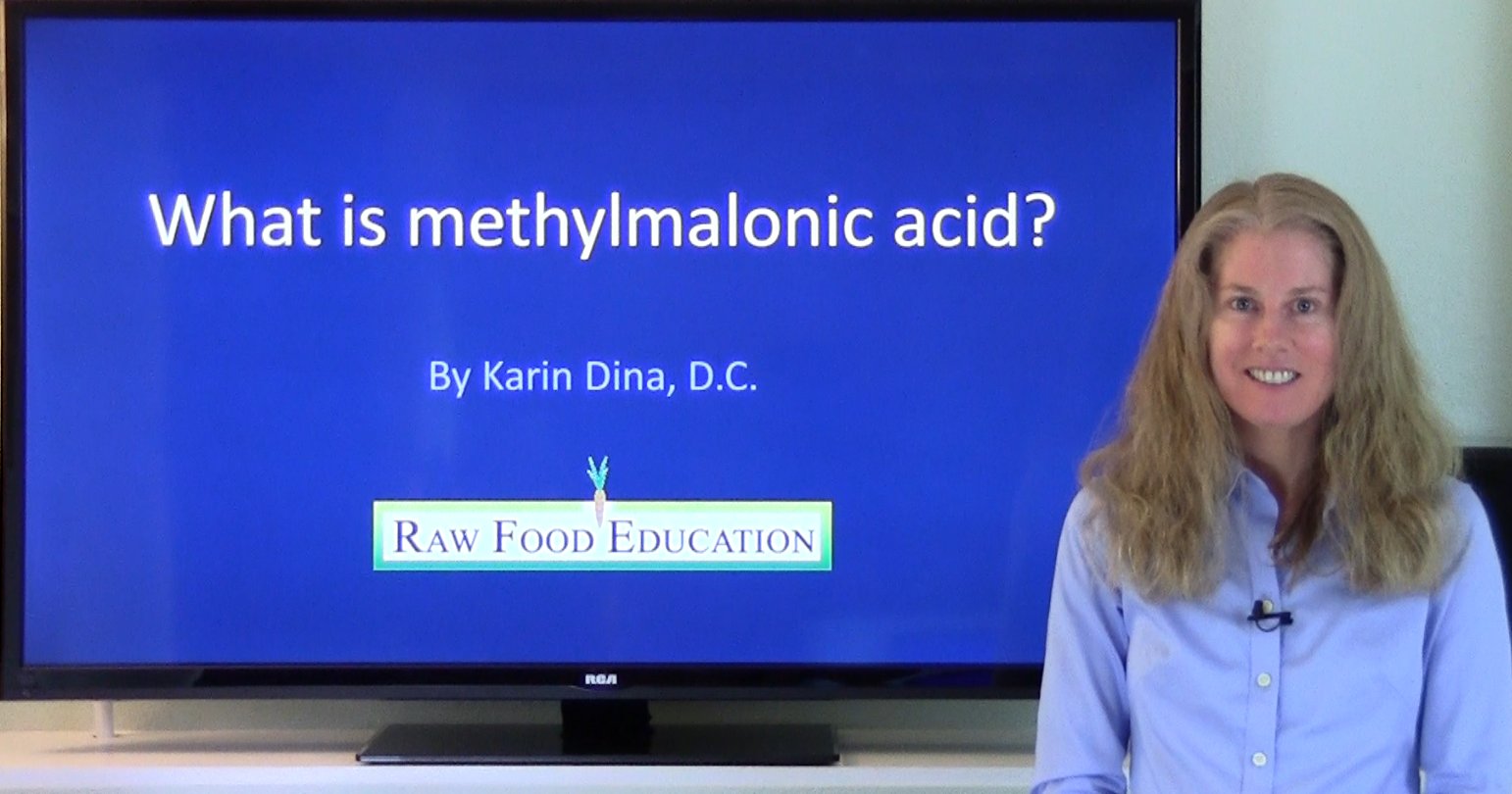 Methylmalonic acid (MMA) is a popular vitamin B12 test.
Methylmalonic acid (MMA) is a popular vitamin B12 test.
But what actually is MMA and where does it come from? In the human body, MMA is a breakdown product or byproduct of protein, carbohydrate, and cholesterol metabolism. In other words, when a variety of proteins, fatty acids, and cholesterol are used to create energy, one of the byproducts is methylmalonic acid.
The specifics of this energy producing pathway are described as follows: In the creation of energy, the amino acids valine, isoleucine, methionine, threonine, odd-chain fatty acids, and cholesterol all go through a variety of metabolic processes to be converted into a substance called propionyl CoA. Propionyl Co-A is then converted into methylmalonyl CoA. When we are in good human bioactive B12 status, methylmalonyl CoA is then converted into succinyl CoA by an enzymatic reaction in which vitamin B12 is a co-factor. In other words, vitamin B12 is essential for the conversion of methylmalonyl CoA into succinyl CoA.
Succinyl CoA is an intermediate in the Kreb’s Cycle (also known as the TCA cycle), which is involved in energy production. We now see how vitamin B12 plays a role in energy production in our body.
What happens when someone becomes B12 deficient? The pathway that converts methylmalonyl CoA into succinyl CoA becomes de-emphasized and the amount of methylmalonyl CoA starts to increase. As this amount increases, methylmalonyl CoA is converted into methylmalonic acid. Methylmalonic acid does not have any specific function in the body, so it is eliminated from the body by the urinary tract. When one is deficient in vitamin B12, their blood and urine generally have elevated levels of methylmalonic acid.
Vitamin B12 is very important for this pathway and many other reactions throughout the body. The bottom line is that it is a good idea to know our vitamin B12 status, which we can achieve through reliable B12 testing.
We cover the importance of vitamin B12, reliable testing, and reliable sources in our book, The Raw Food Nutrition Handbook, An Essential Guide to Understanding Raw Food Diets. If you are interested in our lab testing and nutrition consulting services, please visit www.rawfoodconsulting.com.
This video explains how and why methylmalonic acid can be created in the human body:
One of the best ways to keep in touch with us is to join our email list. You’ll receive a free copy of Our Top 12 Strategies for Long Term Success on A Raw Plant-Based Diet eBook along with regular information about raw food and plant-based diets and periodic promotions for our classes, events, and other offerings!
The Protein Content of Various Types of Sprouts
Are sprouts as rich in protein as they are rumored to be? How does the protein content of different types of sprouts compare? This video gives a good summary of available information:
One of the best ways to keep in touch with us is to join our email list. You’ll receive a free copy of Our Top 12 Strategies for Long Term Success on A Raw Plant-Based Diet eBook along with regular information about raw food and plant-based diets and periodic promotions for our classes, events, and other offerings!
Where do you get your protein on a raw plant- based vegan diet? A simple answer.
From our experience, this is by far one of the most commonly asked questions of people on raw or plant-based diets. The answer is fortunately quite simple: all plants contain protein. This may come as a surprise for some given that meat is commonly thought to be the sole or main source of protein in food.
Because all plants contain protein, all whole natural plant foods contain protein. Here is a summary of the protein content in a variety of plant foods found on a plant-based diet:
| Type of Food | Carbohydrate | Protein | Fat |
| Sweet Fruit | 89% | 6% | 5% |
| Vegetables | 73% | 18% | 9% |
| Nuts and Seeds | 16% | 11% | 73% |
| Avocados | 19% | 5% | 76% |
| Coconuts | 17% | 4% | 79% |
| Legumes | 66% | 30% | 4% |
| Grains | 80% | 12% | 8% |
| Pseudograins | 71% | 15% | 14% |
| Yams | 92% | 7% | 1% |
| Spirulina | 26% | 64% | 10% |
| Oil | 0 | 0 | 100% |
This chart shows the macronutrient (carbohydrate, protein, and fat) averages in a variety of types of foods as a percentage of calories. Some people may think that fruit does not contain protein, but as we can see, about 6% of the calories in fruit come from protein. Vegetables are higher in protein than fruit and nuts and seeds.
Even coconuts and avocados that are known for their high fat content contain some protein. Legumes are high in protein and low in fat, and can be considered a lean source of protein. In general, pseudograins are higher in protein than grains. True grains are found in the grain or grass family, known as the Poaceae, while pseudograins or pseudocereals including quinoa, amaranth, and buckwheat and are not members of the grain family. Quinoa and amaranth are found in the amaranth plant family (Amaranthaceae) and buckwheat is found in the Polygonaceae plant family.
Yams are well-known for their carbohydrate content and contain 7% of the calories from protein. Spirulina, a cyanobacterium, is the highest of all at 64% of the calories from protein. For more information on spirulina, check out my video. All oils are 100% of the calories from fat, which is one of the many reasons that I encourage people to eat whole natural plant foods, which are some combination of carbohydrate, protein, and fat.
How does this information compare to our protein needs? The World Health Organization suggests that a protein intake of 0.8 g of protein per kilogram of body weight is estimated to cover 97.5 percent of the human population’s needs. For someone who weighs 120 lbs. this would be 44 g of protein per day or 9% of the calories on a 2000 calorie per day diet. For someone who weighs 150 lbs. this would be 54 g of protein or 10% of the calories on a 2200 calorie per day diet. Our daily diets are composed of a combination of whole plant foods that contain more protein than these respective gram measurements and average out to greater than these percentages of calories from protein. Not surprisingly, after a combined 50 + years of living this lifestyle, we feel great.
We encourage you to learn more about this fascinating and often contentious topic, so we further delve into the protein content of raw and plant-based diets in our online Mastering Raw Food Nutrition and Educator Course. For more class details, click here.
Our book The Raw Food Nutrition Handbook: An Essential Guide to Understanding Raw Food Diets addresses plant protein in greater depth and many other hot topics in raw food nutrition such as essential fats, nutrient content of raw food diets, food combining, enzymes, hydration, vitamins, minerals, and many more. We value education on these important topics and are happy to finally bring this book to you. The book is available on Amazon and other online booksellers.
https://www.youtube.com/watch?v=UOlbU1vj9ms&feature=youtu.be
One of the best ways to keep in touch with us is to join our email list. You’ll receive a free copy of Our Top 12 Strategies for Long Term Success on A Raw Plant-Based Diet eBook along with regular information about raw food and plant-based diets and periodic promotions for our classes, events, and other offerings!
Can fruit make a meaningful iron contribution to a raw plant-based diet?
One of the best ways to keep in touch with us is to join our email list. You’ll receive a free copy of Our Top 12 Strategies for Long Term Success on A Raw Plant-Based Diet eBook along with regular information about raw food and plant-based diets and periodic promotions for our classes, events, and other offerings!
Produce Tip #2: How to Revitalize Wilted Leafy Greens
Got wilted greens? Don't compost them, rehydrate them! This simple, short video shows how our wilted collard greens regained their turgor:
One of the best ways to keep in touch with us is to join our email list. You’ll receive a free copy of Our Top 12 Strategies for Long Term Success on A Raw Plant-Based Diet eBook along with regular information about raw food and plant-based diets and periodic promotions for our classes, events, and other offerings!
Late Summer and Early Fall Fruit Sampler: Blackberries and Figs
In our neighborhood here in northern California, there are many places where we can forage wild blackberries from late summer into fall. When I go out to harvest wild blackberries I am reminded to be mindful of the thorns that these plants have on their stems and leaves. Blackberries are in the rose family, so it is not surprising to find thorns on these plants. Here is a nutrient analysis of one cup of blackberries (144 g):
| Blackberries – 1 cup | Adult Daily Requirements | |
| Calories | 62 | varies |
| Calcium | 42 | 1000 mg, 1200 mg |
| Iron | 0.9 | 8 mg for men and postmenopausal women, 18 mg for premenopausal women |
| Magnesium | 29 | 310 – 320 mg for women, 400 – 420 mg for men |
| Potassium | 233 | 4,700 mg |
| Zinc | 0.8 | 8 mg for women, 11 mg for men |
In reality, I eat more than one cup of blackberries in one sitting, so here is a nutrient analysis of 3½ cups of blackberries (504 g):
| Blackberries – 3½ cups | Adult Daily Requirements | |
| Calories | 217 | varies |
| Calcium | 246 | 1000 mg, 1200 mg |
| Iron | 3.1 | 8 mg for men and postmenopausal women, 18 mg for premenopausal women |
| Magnesium | 101 | 310 – 320 mg for women, 400 – 420 mg for men |
| Potassium | 816 | 4,700 mg |
| Zinc | 2.7 | 8 mg for women, 11 mg for men |
Often, people in the raw food community ask me if fruits are good source of minerals. The answer is that it depends on the fruit and how much one is eating of that fruit. As we can see, blackberries eaten in quantity can be a significant source of the minerals stated in the table above.
Not only can blackberries be a good source of certain important minerals, they are also well known for being a good source of antioxidants. Antioxidants are molecules that can neutralize free radicals before they cause damage to our cells.
A 2006 study measured the antioxidant content of over 1,000 foods and listed the 50 with the highest antioxidant content per 100 grams. Blackberries are number 19 on the list with 3.99 mmol antioxidants per 100 g. Foods that were higher than blackberries include ground cloves, oregano, ginger, cinnamon, turmeric, walnuts, basil, and others. For a full list please watch the video associated with this blog post or view the study listed in the reference section.
There is a challenge with measuring the antioxidant content of foods per 100 grams, given that one must consider how much of these foods one would actually eat in one sitting. Does it make sense that someone is going to eat 100 grams of cloves in one sitting? No, usually when one adds cloves to a recipe, the amount is usually around 1 teaspoon (2.1 grams) or a similar amount. However, it does make sense that one would eat 100 grams of blackberries (a little less than ¾ cup) or much more as mentioned earlier. When antioxidant content was measured per serving size, blackberries topped the list at 5.75 mmol antioxidants per cup, followed by walnuts, strawberries, artichokes, cranberries, and others. Ground cloves were further down on the list at number 10 with 2.64 mmol of antioxidants per teaspoon. Per serving, blackberries had the highest in antioxidants per serving than all other foods tested, which would include other high antioxidant berries like blueberries and raspberries.
What are some of the antioxidants found in blackberries? One type is anthocyanins, which are famous for their blue coloring. Other examples of anthocyanin containing foods include blueberries and raspberries.
Here is a video explaining this information with some added facts on the nutrient content of figs:
References:
Halvorsen BL, Carlsen MH, Phillips KM, Bøhn SK, Holte K, Jacobs DR Jr, Blomhoff R. Content of redox-active compounds (ie, antioxidants) in foods consumed in the United States. Am J Clin Nutr. 2006 Jul;84(1):95-135.
Nutrient content of blackberries: USDA nutrient database
But isn’t fruit controversial for some reason?
To make it easy for people to find reliable information on fruit, the glycemic index, glycemic load, fructose, glucose, and carbohydrates in general, we dedicated a chapter in our book, The Raw Food Nutrition Handbook: An Essential Guide to Understanding Raw Food Diets to answering many common carbohydrate questions.
In the book we also cover other hot topics in raw food nutrition such as essential fats, protein, nutrient content of raw food diets, food combining, enzymes, hydration, vitamins, minerals, and many more. We value education on these important topics and are happy to finally bring this book to you. The book is available on Amazon and other online booksellers.
One of the best ways to keep in touch with us is to join our email list. You’ll receive a free copy of Our Top 12 Strategies for Long Term Success on A Raw Plant-Based Diet eBook along with regular information about raw food and plant-based diets and periodic promotions for our classes, events, and other offerings!
My Top Five Favorite Leafy Greens
One of the best ways to keep in touch with us is to join our email list. You’ll receive a free copy of Our Top 12 Strategies for Long Term Success on A Raw Plant-Based Diet eBook along with regular information about raw food and plant-based diets and periodic promotions for our classes, events, and other offerings!
Spirulina and Chlorella: What are they?
- Are they plants?
- Are they animals?
- What are they exactly?
To get a better understanding about spirulina and chlorella, let’s examine the five kingdoms of life:
- Plantae – the plant kingdom
- Animalia – the animal kingdom
- Fungi – the fungus kingdom
- Protista – the protist kingdom
- Monera – the single-celled organism kingdom or the bacteria kingdom
All living organisms on this planet are grouped into one of these five kingdoms.
Spirulina
Spirulina has been classified as a type of cyanobacteria. Cyanobacteria are single-celled organisms with a chloroplast, conferring photosynthetic ability. Photosynthesis is the process by which an organism creates its own food from sunlight. The chloroplasts in spirulina give it a blue-green coloring, which is why spirulina is often informally referred to as a “blue-green algae”. It’s not actually an algae, it’s a type of bacteria.
There are two species of spirulina available as products:
- Arthrospira platensis – formerly known as spirulina platensis
- Arthrospira maxima – formerly known as spirulina maxima
Given that spirulina is a type of cyanobacteria, it is found in the bacteria kingdom.
There are many species of chlorella all of which have been classified as green algae. Historically, most types of algae have been grouped in the plant kingdom, however, some species of algae including chlorella are considered to be structurally simpler and smaller than plants. Because chlorella is such a small algae, there are some researchers that would like to have it classified as a protist. At this time, there is some controversy as to whether or not chlorella is a plant or a protist.
Let’s take a closer look at what a protist actually is. Is a protist an animal? No, animals are grouped in a separate kingdom of their own. Protists are multicellular, they have many cells, so they are not bacteria. Protists are not as complex and have a simpler cellular organization than plants, animals, or fungi, which is one of the reasons why protists have their own separate kingdom. Protists generally live in water examples of which include simpler algaes and other types of microscopic organisms. Although its classification is a work in progress, chlorella clearly has never been classified as animal, only a plant or protist.
For comparison, let’s consider krill. How does krill compare to chlorella? Krill is known for its omega-3 fat content, specifically DHA. Krill has been classified in the animal kingdom because it has a nervous system, digestive system, eyes, and other structures and functions in common with animals. Krill is a small animal at 5 cm in length. By contrast, chlorella is 0.0005 cm in diameter and spirulina is 0.0005 cm long, both being much smaller than krill.
In summary, spirulina is a type of cyanobacteria classified in the bacteria kingdom, while chlorella is a type of algae that has been historically considered in either the plant kingdom or the protist kingdom. Clearly neither spirulina nor chlorella has ever been grouped in the animal kingdom.
Interested in taking your nutrition knowledge to the next level?
We cover this topic and so much more in our online Mastering Raw Food Nutrition and Educator Course. For more class details, click here.
Additionally, our book The Raw Food Nutrition Handbook: An Essential Guide to Understanding Raw Food Diets addresses many hot topics in raw food nutrition such as essential fats, protein, nutrient content of raw food diets, food combining, enzymes, hydration, vitamins, minerals, and many more. We value education on these important topics and are happy to finally bring this book to you. The book is available on Amazon and other online booksellers.
One of the best ways to keep in touch with us is to join our email list. You’ll receive a free copy of Our Top 12 Strategies for Long Term Success on A Raw Plant-Based Diet eBook along with regular information about raw food and plant-based diets and periodic promotions for our classes, events, and other offerings!
What is so great about dandelion greens?
One of the best ways to keep in touch with us is to join our email list. You’ll receive a free copy of Our Top 12 Strategies for Long Term Success on A Raw Plant-Based Diet eBook along with regular information about raw food and plant-based diets and periodic promotions for our classes, events, and other offerings!
How do you know if a food contains gluten?
One of the best ways to keep in touch with us is to join our email list. You’ll receive a free copy of Our Top 12 Strategies for Long Term Success on A Raw Plant-Based Diet eBook along with regular information about raw food and plant-based diets and periodic promotions for our classes, events, and other offerings!
Research, Clinical Experience, and Personal Experience: Which is Most Important?
One of the best ways to keep in touch with us is to join our email list. You’ll receive a free copy of Our Top 12 Strategies for Long Term Success on A Raw Plant-Based Diet eBook along with regular information about raw food and plant-based diets and periodic promotions for our classes, events, and other offerings!
Go Greener with the Dinas!
When I first became interested in health 25 years ago, in addition to choosing a healthful diet, I learned the importance of taking care of our beautiful planet, its precious resources, and its inhabitants. Back then, I asked myself how I as an individual, could make a difference in making the world a greener place. I realized then that collective action from a number of people can absolutely make a difference, and that people do take action when they begin to realize the changes each person can make to add to the whole.
Since my health journey began, I‘ve seen many changes in the “green habits” people have adopted. Recycling is a great example. Growing up in the 1970s, my hometown did not have curbside recycling and I had not heard of any municipality that did. Today, I can’t think of a community that doesn’t offer recycling. This exemplifies the influence that groups of conscientious people can have on public policy. Fuel efficient cars are another great example. Over the last several years, wherever I travel in the U.S. I’ve seen growing numbers of hybrid and alternative fuel cars. The city where I live even gives financial incentives to people who replace their lawns with native plants, encouraging water conservation.
Here are several examples of simple things that Rick and I do regularly to make a positive contribution:
• Grow our own food
• Use vinegar as a weed eliminator
• Use gray water to water our lawn
• Use green cleaners and personal care products
• Wash and reuse produce bags
Rick and I have always grown our own food in the places we’ve lived, no matter how small. When we lived in apartments, we sprouted and did our best to grow food in containers on our apartment patio, when possible. When we moved into our house, we built raised bed gardens and bought some wine barrel planters. Since we live in northern California, our garden is productive all year, and we grow popular summer staple foods like tomatoes, lettuce, bell peppers, several types of greens, squash, and many other vegetables and fruits. Our winter garden is mostly composed of hardy greens like kale.
We’ve found that vinegar makes a great weed eliminator in the areas of our yard that do not have food producing plants like the front yard. One huge caveat would be to NOT use vinegar on lawn weeds, since it kills grass! We found this out the hard way. Fortunately, the lawn in these areas is growing back now— since we’ve watered it (and rest of our lawn) with gray water.
When we shower, we collect the gray water in buckets and use the water on our lawn, trees, and shrubs. This can be a little cumbersome at first, since we have to carry the buckets from our shower out to the front yard. When we started doing this, we were astounded at how much water we used for showering, but carrying the water has taught us to use much less, which is especially important now that California is experiencing a drought.
I’ve used natural and biodegradable household cleaners, soaps, shampoos, and conditioners for 25+ years, and am gratified to find many more quality eco-friendly products available today.
For many years, I’ve washed and reused plastic produce bags. This takes a little time, but I absolutely think it is time well spent and I’m happy to help keep plastic out of the landfill. Many communities now forbid plastic bags for purchases—another great sign of progress for going greener. Green bags and reusable mesh bags are now available for produce as well.
Another green strategy includes buying locally produced food to cut down on fossil fuel expenditure during transportation, opting out of receiving junk mail to save paper, using rechargeable batteries to run remote controls and other gadgets, and eating mostly organic food. A couple of years ago we replaced the single-paned windows in our house with double-paned windows to save on heat loss. Our best strategy of all is to eat a high raw, whole food plant-based diet, which provides numerous benefits both for our health and the planet.
This is just a sampling of our “go greener” strategy. We know that every positive change each of us makes contributes to a greener, healthier planet for all!
One of the best ways to keep in touch with us is to join our email list. You’ll receive a free copy of Our Top 12 Strategies for Long Term Success on A Raw Plant-Based Diet eBook along with regular information about raw food and plant-based diets and periodic promotions for our classes, events, and other offerings!
Beta-carotene absorption and conversion to vitamin A on a raw plant-based vegan diet
 Where does one get vitamin A on a plant-based vegan diet?
Where does one get vitamin A on a plant-based vegan diet?
Vitamin A is essential for proper cell growth and reproduction and is probably best known for its importance in vision. It also plays an important role in immune system function and skin health. Vitamin A (also known as retinol) is found exclusively in animal foods and various vitamin supplements. Vitamin A is an essential nutrient for humans, so if one is eating a vegan diet, where is this vitamin A obtained? Fortunately, the human body converts beta-carotene and certain other carotenoids to vitamin A when necessary. Beta-carotene is a well-known carotenoid famous for providing carrots with their orange coloring and is found in many other plant foods, especially green, yellow, and orange-colored fruits and vegetables.
Beta-carotene conversion to vitamin A
How does this conversion of beta-carotene to vitamin A work? In the human body, beta-carotene is converted to retinal by a dioxygenase enzyme. Retinal is then converted to retinol (vitamin A) by a dehydrogenase enzyme:
Other carotenoids that are capable of converting to vitamin A in the human body include alpha-carotene, gamma-carotene, and beta-cryptoxanthin. Of the four carotenoids, the one that converts the most reliably to vitamin A is beta-carotene.
Why is my skin orange?
Vitamin A is a fat-soluble nutrient, which means that it can be stored in our body and we run the risk of getting too much from outside sources, such as supplements consumed in excess of the body’s needs. Carotenoids are fat soluble also, but do not carry the same risks as vitamin A with excess consumption. In excess of the body’s needs, carotenoids are stored in fat cells including those under our skin, giving an orange color to the skin which is only cosmetic.
Do we have to cook our food to get enough beta-carotene and vitamin A?
Many people have asked about the effectiveness of this carotenoid conversion mechanism and how well carotenoids are absorbed from raw food. A recent study found normal vitamin A status and favorable blood beta-carotene levels in 200 long-term raw food enthusiasts. This indicates is that these raw foodists consumed a good amount of beta-carotene, a quantity was absorbed and was present in their bloodstream, and then an appropriate amount was converted into vitamin A.
References:
Fleshman, Matthew Kintz. Beta Carotene Absorption and Metabolism. Ph.D. dissertation, Ohio State University, 2011.
Garcia A, Koebnick C, Dagnelie P, Strassner C, Elmadfa I, Katz N, Leitzmann C, Hoffman I. British Journal of Nutrition 2008; 99: 1293 – 1300.
Interested in taking your vitamin A, beta-carotene, and general nutrition knowledge to the next level?
We cover this topic and so much more in our online Mastering Raw Food Nutrition and Educator Course. For more class details, click here.
Additionally, our book The Raw Food Nutrition Handbook: An Essential Guide to Understanding Raw Food Diets addresses many hot topics in raw food nutrition such as essential fats, protein, nutrient content of raw food diets, food combining, enzymes, hydration, vitamins, minerals, and many more. We value education on these important topics and are happy to finally bring this book to you. The book is available on Amazon and other online booksellers.
One of the best ways to keep in touch with us is to join our email list. You’ll receive a free copy of Our Top 12 Strategies for Long Term Success on A Raw Plant-Based Diet eBook along with regular information about raw food and plant-based diets and periodic promotions for our classes, events, and other offerings!
Enhance Your Raw Food Diet with Home Grown Produce!
Spring is in the air and gardening season has begun in our home! Some of the many joys a raw food enthusiast experiences in Springtime are: preparing soil in raised beds to grow favorite garden vegetables, choosing the perfect vegetable starts, then planting them and watching them grow throughout the season. Harvest time is always exciting, too, as we reap the “fruits of our labor” (and the vegetables, too!).
Plant leafy greens for optimal nutrition
This year, in order to pack our raw vegan diet with optimal nutrition, we’ve planted a plenitude of leafy greens, including several types of lettuce, frisée (curly endive), dandelion greens, arugula, two types of kale, and two types of collard greens. The lettuce varieties we planted are heirloom varieties of green leaf, red leaf, red Romaine, green Romaine, and red oak leaf. Lettuce, frisée, and dandelion greens are all members of the sunflower family (Asteraceae), while arugula, kale, and collard greens are members of the cabbage family (Brassicaceae). Members of this plant family are also known as cruciferous vegetables, and include broccoli, cauliflower, maca, turnip, rutabaga, Brussels sprouts, watercress, red and green cabbage, bok choy, and Napa cabbage.
We’ve also planted several varieties of tomatoes, including some of the heirloom varieties we love, like Pineapple tomatoes, Cherokee Purple, Green Zebra, Brandywine, and several different types of cherry tomatoes. Several tomato varieties love heat, and we planted those in our yard on the south side of the house, which is warmer than the rest of our yard and more sheltered from the wind. Tomatoes are part of the nightshade family (Solanaceae) along with bell peppers, eggplant, potatoes, tomatillos, goji berries, Incan berries, jalapeño peppers, and other hot pepper varieties.
Plant mints in containers for best results
We have quite a few plants from the mint family in our yard this year, including several types of basil and four types of mint. Mints have a tendency to grow and spread prolifically. Early in my gardening career I made the mistake of planting mint in my raised beds and found out the hard way that mint plants have a tendency to “take over” the garden. This year, I learned from past experience and planted the mints in half wine barrels to keep them appropriately contained. However, if you want a very aromatic ground cover, Corsican Mint is a beautiful choice. A couple of years ago, I planted it in a makeshift herb garden in a non-grassy area of my yard. It has since spread and creates a deliciously fragrant chocolate mint addition to the area. It may surprise you to know that Chia seeds are another member of the mint family famously popular in the raw food community!
On the other hand, most types of basil stay localized in their growth habit, so I plant basil directly in my raised beds. They make a lovely companion planting next to the tomatoes, and the two are a perfect culinary combination, especially in Italian cuisine.
Fruit-bearing plants in our yard include two types of lemon trees and a fig tree, which is already producing numerous small figs. The fig tree is only five years old, and has already been producing numerous baskets of figs for the last three seasons. Since we adore figs, we’re really looking forward to harvest time later this year!
Plant fruits and vegetables no matter where you live
This is a small sampling of the foods we are currently growing in our yard and garden. We enjoy being able to create more diversity in our raw food diets and growing foods we enjoy that can be harder to find in the grocery store aisles. Even more importantly, we notice a big difference in the taste and quality of the foods we grow compared to the ones we buy. We suggest growing fruits and vegetables—you’ll be well rewarded in both taste and nutritional value. Before we had a back yard, we grew vegetables and fruits on our apartment patio, and sprouts, greens, and grasses near a window in our dining room. There are so many ways to grow your own food, and at harvest time, you’ll be grateful that you made the worthwhile effort. Happy gardening!
One of the best ways to keep in touch with us is to join our email list. You’ll receive a free copy of Our Top 12 Strategies for Long Term Success on A Raw Plant-Based Diet eBook along with regular information about raw food and plant-based diets and periodic promotions for our classes, events, and other offerings!
Raw Food and Prebiotics for Health
There has been a lot of talk about the importance of probiotics for health in the media recently. As a result, there are now numerous products on the market that are supplemented with probiotics. It’s important to understand not only the health benefits of probiotics, but how to keep them alive once they are in the intestinal tract.
Probiotics need food to survive, and once in our intestinal tract, probiotics can stay alive on the foods we ingest. Just like people, probiotics thrive on specific types of foods, especially certain types of fiber. Fiber is not digestible by humans, but is fermentable by probiotics. Fiber that can provide food for probiotics is referred to as a prebiotic. Most types of fiber are composed of glucose molecules hooked together by chemical bonds; but the types of fiber that probiotics prefer as a source of food are composed of fructose molecules hooked together by chemical bonds. These types of fiber include fructooligosaccharides (FOS) and inulin.
Probiotics break down fructooligosaccharides and inulin into fructose and free fatty acids. The resulting fructose is then used as a food source by the probiotics and the free fatty acids serve as a food source for the cells that line our large intestine. In this way, among many others, probiotics help to provide food for us.
Raw Food Plant Based Diet Rich Source of Prebiotics
Inulin and fructooligosaccharides occur naturally in greater than 36,000 plant species in varying amounts. Some of the richest sources of inulin and FOS include banana, dandelion greens, garlic, artichoke, Jerusalem artichoke, onion, leek, yacon, shallot, and many more. There are numerous other commonly consumed raw foods that provide smaller amounts of these types of fiber, including lettuce, snap peas, snow peas, carrots, peaches, blackberries, watermelon, navel oranges, black grapes, raspberries, other fruits and vegetables, and some whole grains. Fruits and vegetables provide plenty of this and many other beneficial types of fiber, which is just one of a myriad of benefits derived by consuming large quantities of fruits and vegetables in one’s daily diet.
There is still much to learn about the health benefits and preferred foods of probiotics, and the media buzz on probiotics continues to grow. There have been articles in major newspapers including the New York Times on the possible connection between probiotics and maintaining a healthy weight, attributed to the ability of probiotics to use calories from our food for their own energy needs. This way, those extra calorie sources are consumed by probiotics rather than being absorbed by the body and stored as fat.
This is just the tip of the iceberg! We include much more information about the importance of probiotics and prebiotics in our Mastering of Raw Food Nutrition. We’d love for you to join us to learn more about this and many other fascinating topics on the science of plant based raw food nutrition.
References and Research:
Bosscher D(1), Breynaert A, Pieters L, Hermans N. Food-based strategies to modulate the composition of the intestinal microbiota and their associated health effects. J Physiol Pharmacol. 2009 Dec;60 Suppl 6:5-11.
de Vrese M(1), Schrezenmeir J. Probiotics, prebiotics, and synbiotics. Adv Biochem Eng Biotechnol. 2008;111:1-66.
Kechagia M(1), Basoulis D(2), Konstantopoulou S(1), Dimitriadi D(1), Gyftopoulou K(1), Skarmoutsou N(1), Fakiri EM(1). Health benefits of probiotics: a review. ISRN Nutr. 2013 Jan 2;2013:481651.
Kelly G. Inulin-type prebiotics--a review: part 1. Altern Med Rev. 2008 Dec;13(4):315-29.
Niness K. Inulin and oligofructose: what are they? J Nutr 1999; 129 (7 Suppl): 1402S – 1406S.
Quigley EM. Prebiotics and probiotics; modifying and mining the microbiota. Pharmacol Res. 2010 Mar;61(3):213-8.
Roberfroid M(1), Gibson GR, Hoyles L, McCartney AL, Rastall R, Rowland I, Wolvers D, Watzl B, Szajewska H, Stahl B, Guarner F, Respondek F, Whelan K, Coxam V, Davicco MJ, Léotoing L, Wittrant Y, Delzenne NM, Cani PD, Neyrinck AM, Meheust A. Prebiotic effects: metabolic and health benefits. Br J Nutr. 2010 Aug;104 Suppl 2:S1-63.
Slavin J. Fiber and prebiotics: mechanisms and health benefits. Nutrients. 2013;5:1417-1435.
Thomas LV(1), Ockhuizen T(2), Suzuki K(3). Exploring the influence of the gut microbiota and probiotics on health: a symposium report. Br J Nutr. 2014 Jul;112 Suppl 1:S1-S18.
One of the best ways to keep in touch with us is to join our email list. You’ll receive a free copy of Our Top 12 Strategies for Long Term Success on A Raw Plant-Based Diet eBook along with regular information about raw food and plant-based diets and periodic promotions for our classes, events, and other offerings!
The Calcium Content of Fruit
One of the best ways to keep in touch with us is to join our email list. You’ll receive a free copy of Our Top 12 Strategies for Long Term Success on A Raw Plant-Based Diet eBook along with regular information about raw food and plant-based diets and periodic promotions for our classes, events, and other offerings!
Is Lettuce a Superfood?
One of the best ways to keep in touch with us is to join our email list. You’ll receive a free copy of Our Top 12 Strategies for Long Term Success on A Raw Plant-Based Diet eBook along with regular information about raw food and plant-based diets and periodic promotions for our classes, events, and other offerings!

